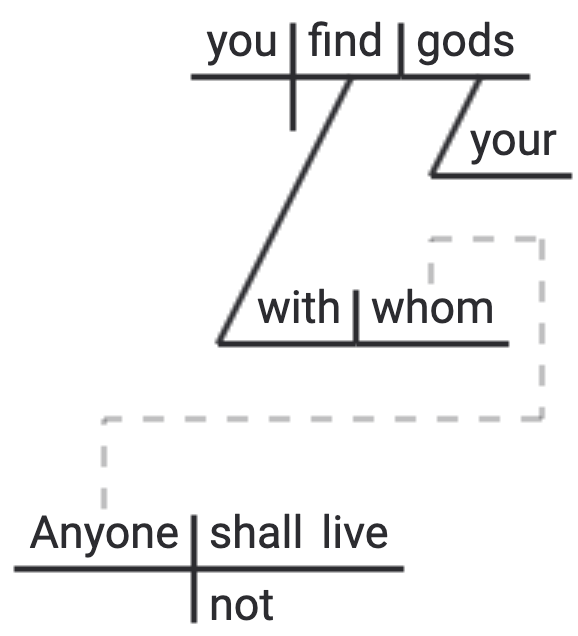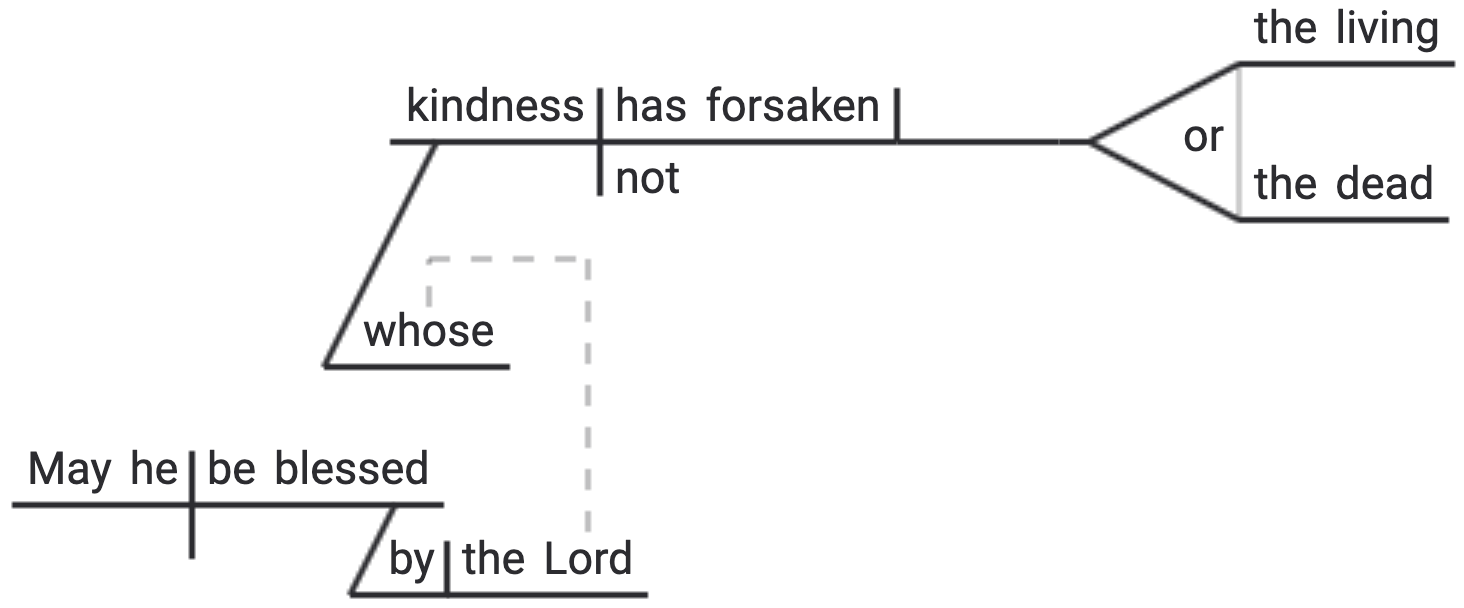Lesson 6: Relative Pronouns & More
Relative Pronouns and Clauses

rel·a·tive pro·noun a pronoun that connects a noun (i.e. the antecedent) to a modifying clause (i.e. the relative clause)
We learned about the pronouns way back in Lesson 2, and now we will take some of those pronouns and use them to introduce what is called a relative clause, an adjectival clause that modifies an “antecedent” (a noun, noun phrase, or substantival) in the sentence. Relative clauses always act adjectivally, and they are always subordinate clauses.
In the Bible, the most common relative pronouns are “who,” “whom,” “which,” and “that,” though there are others. Relative pronouns are not too hard to spot. However, they can be very tricky to label and diagram correctly. For this reason, we make an exception in our labeling of them, in that we label them both Rel (for “relative”) and for the function they serve in the relative clause. You will see how this works in the example sentences below. Relative clauses float separately from the rest of the sentence with a dotted line connecting the antecedent (noun) to the relative pronoun.

Let’s look at some examples.
Relative pronouns can be the subject of the relative clause.
In the sentence below from Amos 6:4, the relative clause is adjectival within the main clause (as are all relative clauses), modifying the antecedent “those.” Within the relative clause, the relative pronoun serves as the subject. So notice that the “who” is labeled Rel:S, to show that it is a relative pronoun, serving as the subject of the relative clause.


Relative pronouns can be an object (DO or OP) within the relative clause.
If the relative pronoun is “whom” (as opposed to “who”), you know it is going to be an object within the relative clause. It will be labeled Rel:DO or Rel:OP. For the relative pronouns “which” and “that,” you will need to determine the relative pronoun’s function within the relative clause from the context.
This is perhaps the trickiest relative pronoun usage to understand. Remember that a pronoun stands in for a noun. It can be helpful with relative pronouns to sub back in the antecedent in place of the relative pronoun. In Genesis 4:26 below, the antecedent (with its article) is “[a] son”. Now plug that back into the relative clause: “whom he named Enosh” becomes “[a] son he named Enosh.” This sounds a bit like Yoda, so let’s rearrange it into slightly more normal English: “He named [a] son Enosh.” Can you see it now? “He” (Spr), “named” (Vt), “[a] son” (DO), “Enosh” (OCN). The relative clause is in an S-Vt-DO-OCN pattern and the relative pronoun is functioning as the DO.


Finding an Rel:OP is similar. In the verse “Anyone with whom you find your gods shall not live” (Genesis 31:32), it is fairly easy to determine that “whom” is an OP within the relative clause since it is proceeded by a preposition. The tricky part here is to note how the relative clause (“with whom you find your gods”) is inserted within the main clause (“Anyone…shall not live”). Once you isolate each of the clauses, parsing and diagramming are pretty straightforward.


Relative pronoun as a genitive within the relative clause
When the relative pronoun is “whose,” it is functioning as a genitive within the relative clause, and it will be labeled Rel:Gen. Similar to the relative pronoun as a DO, you may need to sub in the antecedent for the relative pronoun in order to see how it is acting as a genitive. In the below example from Ruth 2:20, “whose” is standing in for “Lord,” and so we understand that it is the “Lord’s" kindness that has not forsaken them.

